This was published 6 years ago
Gibraltar, UK: The surreal British enclave that is rock solid against Brexit
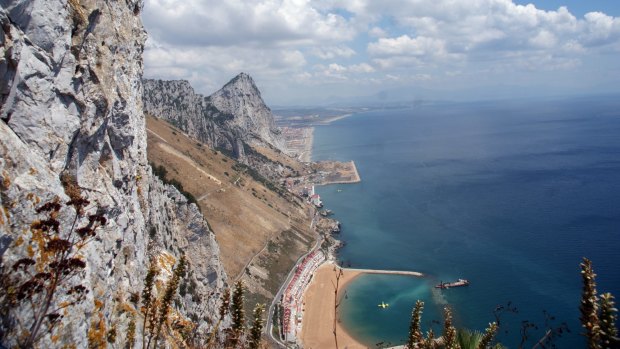
Up on The Rock of Gibraltar.Credit: Steve McKenna
When we quiz Tito, our middle-aged Gibraltarian guide, about his feelings on Brexit, he ums and ahs, turns his palms up and shrugs his shoulders. "Could be good. Could be bad," he says in English with a twang that's a mash-up of Cockney and Spanish.
We weren't expecting such a phlegmatic response in Gibraltar, the most pro-European Union region – OK, overseas territory – of Britain. In last year's referendum, 96 per cent of Gibraltarians voted to "remain". But despite being in limbo – will Gibraltar stay British, fall into the clutches of its neighbours Spain, be shared between the two, or become an independent nation? Tito stresses one thing: The Rock of Gibraltar itself isn't going anywhere.
Lauded by the ancient Greeks – who named it one of the Pillars of Hercules – held by Phoenicians, Romans and Arab Moors, and tussled over for centuries by major European powers, it's an awe-inspiring slab of limestone that juts 426 metres from a peninsula off Spain's Andalusian coast, where the Mediterranean meets the Atlantic. We first glimpsed it as we breakfasted aboard the Regent Seven Seas Explorer – an all-inclusive cruise liner so fancy it's trademarked The Most Luxurious Ship Ever Built.
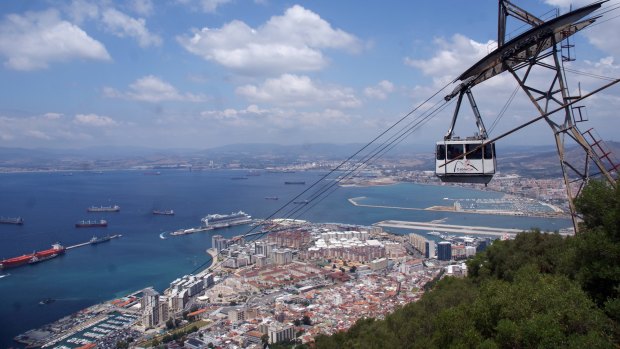
Up on The Rock of Gibraltar.Credit: Steve McKenna
While the first few days of our Mediterranean voyage, which began in Barcelona, were bathed in glorious Spanish sunshine, as we entered British seas, the weather turned, with storm clouds stalking the skies and wreathing The Rock's pointy summit.
On a previous (sunnier, pre-Brexit vote) trip to Gibraltar, I'd taken a thigh-straining hike on The Rock's upper limits, and was rewarded with breath-taking views across the Strait of Gibraltar. Conditions were so clear I could peek Morocco's Rif mountains, and maybe, just maybe, Jebel Musa – reckoned to be the other Pillar of Hercules. I'm happy to take it easier today, however, with Tito showing us the Gibraltar sights on one of the "free" shore excursions that Regent Seven Seas offer in every port. As we navigate the ups and downs of this 6.8-square-kilometre enclave in Tito's mini-bus, we get a potted history. The British first captured The Rock from Spain, with help from the Dutch, in 1704, giving them a firm grip on the Mediterranean-Atlantic shipping route, and sowing the seeds to transform the flattish area beside The Rock into a "Little Britain". Along with defensive walls, bastions and barracks, you'll find red telephone boxes, Anglican churches and fish and chip shops, iconic British stores (think: Marks & Spencer and Topshop), pubs like The Lord Nelson and The Trafalgar, and a Winston Churchill Avenue.
This is Gibraltar's busiest highway, is the only road in and out of the territory, and actually cuts across the airport runway. Every time a "domestic" flight arrives from mainland Britain, traffic grinds to a halt. Driving across the runway, close to the (still fairly fluid) frontier, Tito says every day about 10,000 Spanish come to work in Gibraltar, whose economy is driven by financial services, online gambling and tourism. Many of the 35,000 Gibraltarians are bilingual, but often speak to each other in Llanito, a form of Andalusian Spanish heavily peppered with English words (and influenced by other languages like Maltese, Portuguese, Hebrew and Arabic, reflecting Gibraltar's melting-pot heritage). We hear Tito conversing in Llanito with other drivers at the various stops on the tour.
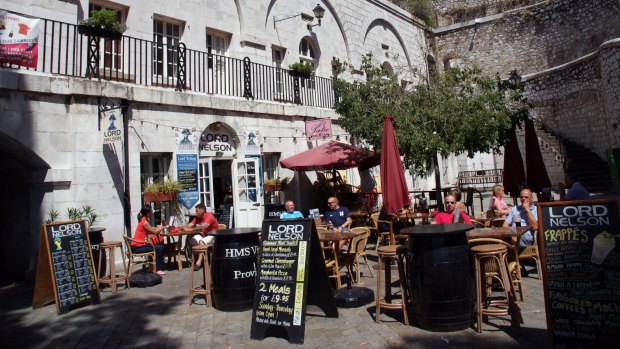
In last year's Brexit referendum, 96 per cent of Gibraltarians voted to 'remain'.Credit: Steve McKenna
Our favourite bit is walking through St Michael's Cave. One of the myriad grottoes and siege tunnels carved into The Rock since the Stone Age, it's a spectacular sight, a vast cathedral-like chamber with stalagmites and stalactites that resemble church organ pipes and giant hanging curtains. Illuminated by gaudy lights, the cave is a popular theatre and concert venue. A trip to Gibraltar wouldn't be complete without coming face to face with the cheeky resident Barbary macaques.
Legend has it that if the "apes" – who arrived on The Rock with British sailors in 1704 – ever leave, Gibraltar would cease to be British. But they appear rather at home still, especially at the alfresco Apes' Den on the Upper Rock. Some of the 200 or so macaques, like Mercedes, who's the oldest, in her mid-30s, are content to chill out, perched on the walls against a backdrop of port and sea; others are more boisterous, baring their formidable teeth, play-fighting among themselves, clambering over the mini-buses and threatening to seize tourists' snacks, smartphones and their Union Jack-clad souvenirs.
TRIP NOTES
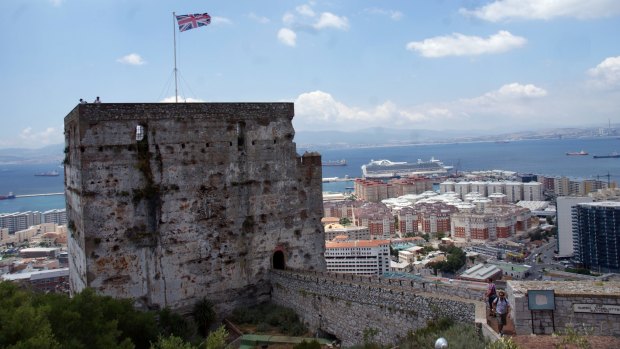
Gibraltar's old Moorish Castle.Credit: Steve McKenna
MORE
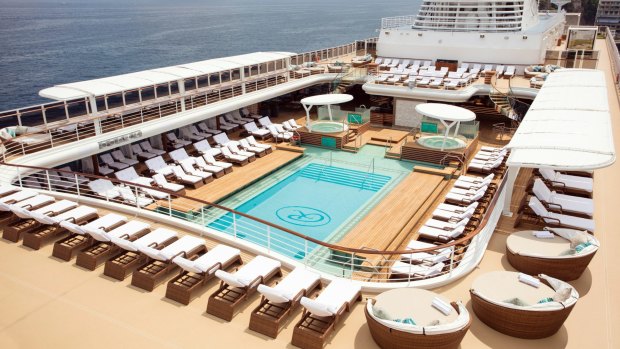
Regent Seven Seas Explorer pool deck.
CRUISE
Gibraltar is a port of call of several Regent Seven Seas Explorer Mediterranean cruises, including a seven-night Barcelona to Lisbon voyage, departing May 15, 2018. It's priced from around $7140 per person. The ship will cruise in Europe until November 2017. After switching to the Caribbean for the northern winter, it returns to Europe in March; rssc.com/ships/seven_seas_explorer
Steve McKenna was a guest of Regent Seven Seas Explorer.
Sign up for the Traveller Deals newsletter
Get exclusive travel deals delivered straight to your inbox. Sign up now.